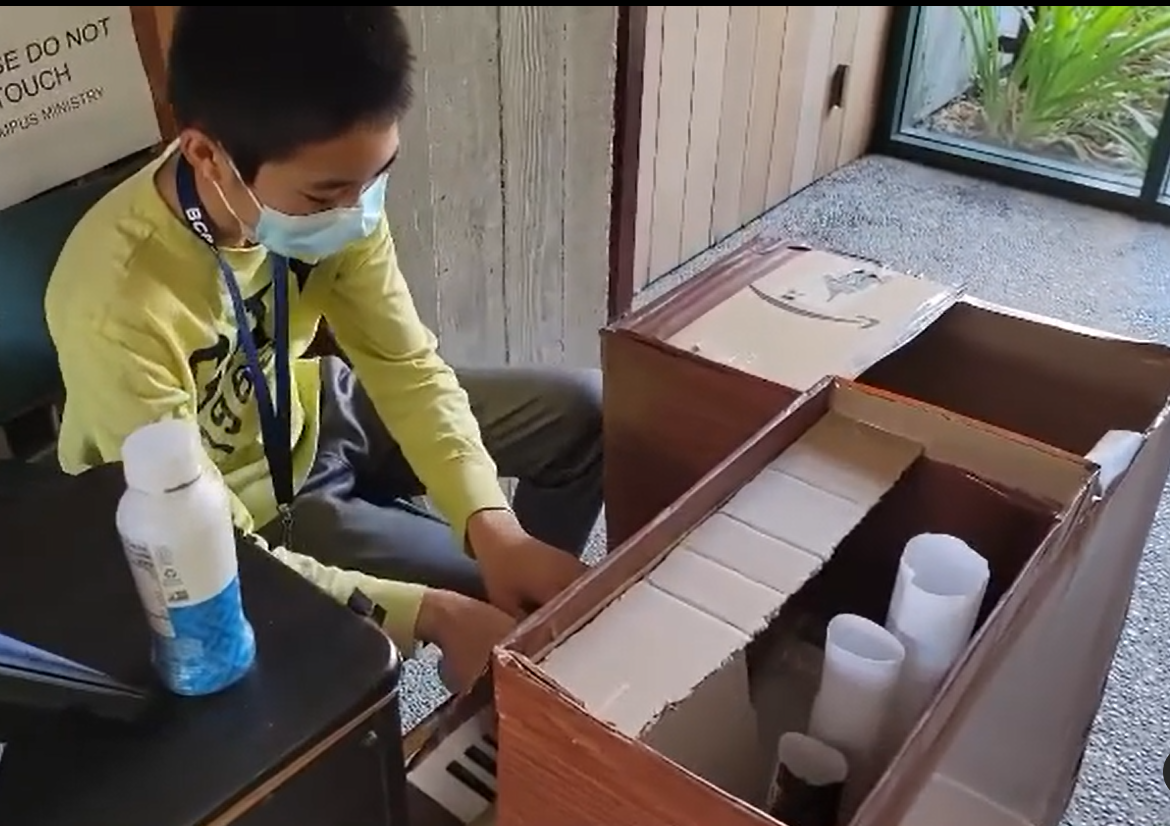Pipe organ made out of cardboard and paper


Ethan Zuo
My name is Ethan, and I am a rising junior at Bellarmine. I have always enjoyed building things since I was very young, starting from paper and cardboard, moving to wood and metal. Besides the paper organ, I have built a wooden bandsaw, lathe, an autonomous bicycle, and several machines. I also enjoy robotics, speech and debate, and playing the organ.
More Maker Info
More Event Info
What inspired you to make this project?
I first saw a pipe organ in 8th grade. Upon seeing the instrument, I became fascinated with its complex mechanisms to produce such beautiful sound. After beginning to play the organ at congregations, I had more and more chances to explore the internals of the organ. The levers, actions, valves, and channels that fed air from the key control to the pipes seemed simple, but the mechanical connections were amazingly vast and complex, especially in larger instruments with more sounds and ranks of pipes. Seeing this, I immediately wanted to build an organ of my own. Researching the physics on how organ pipes work, I was able to make my first working paper organ pipe out of a piece of mail card, some binder paper, and some tape. So excited, I gained motivation to move forward with the project, and it began in the summer of 9th grade.. Soon, I had 32 pipes, corresponding to two-and-a-half octaves, a decent range of notes. Looking at diagrams and pictures of the internals of the real instrument, I replicated the various complex parts and mechanisms out of the most accessible material I had: cardboard boxes. My goal with this project was to share with everybody that it is perfectly possible to build such a complex instrument out of very basic, simple materials, and the essence and importance of rapid prototyping, and I was happy that I achieved that.
What are some of the challenges you have encountered and how did you address them?
Getting rid of leaks in the various systems was definitely the most difficult. There were leaks everywhere during the build process-- in the valve box, windchest, and often the pipes themselves as well. I spent over an hour testing the organ and trying my best to close any leaks, but at this point the airtight qualities of the system are good enough that the sound of the pipes isn't affected and the pressure in the valve box does not drop when more notes are played at once.